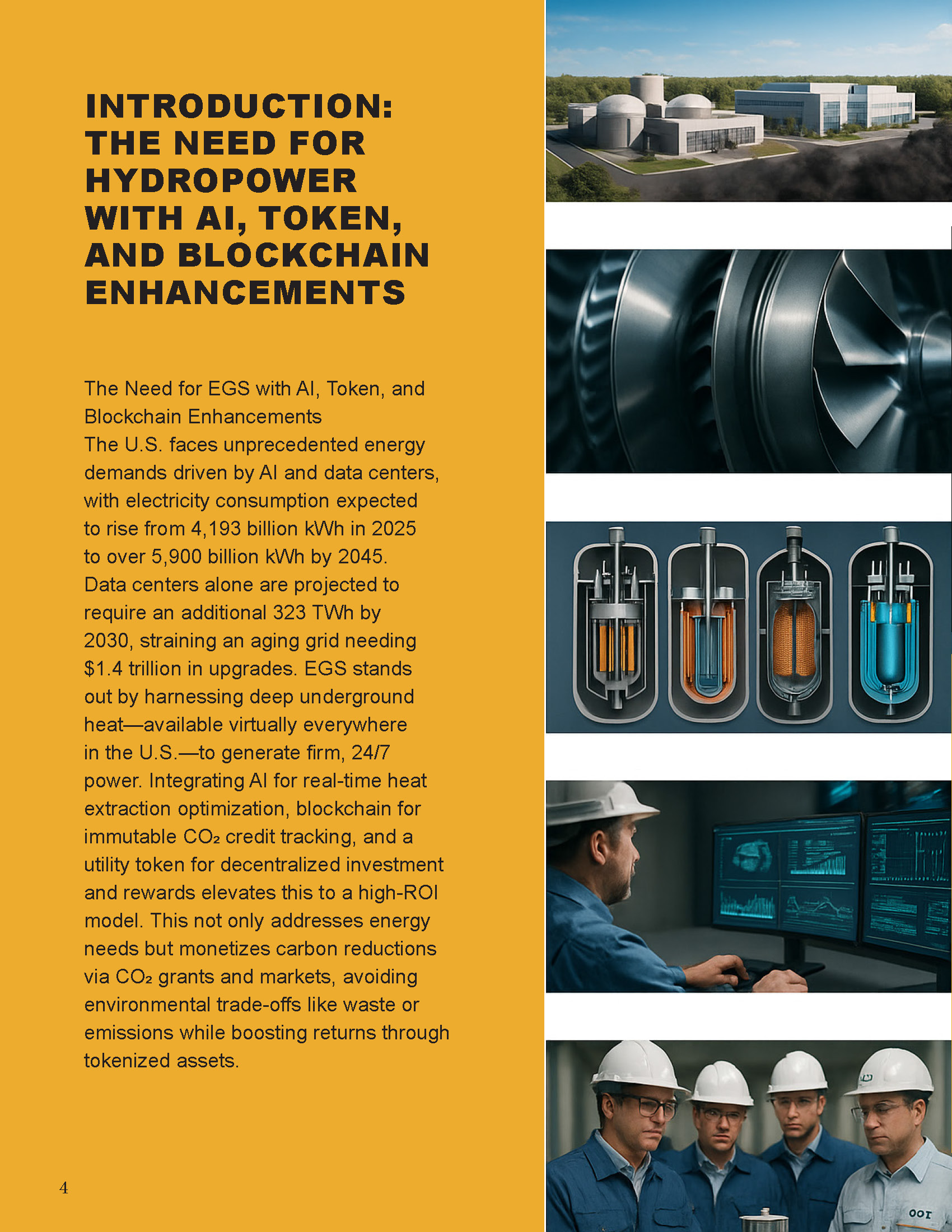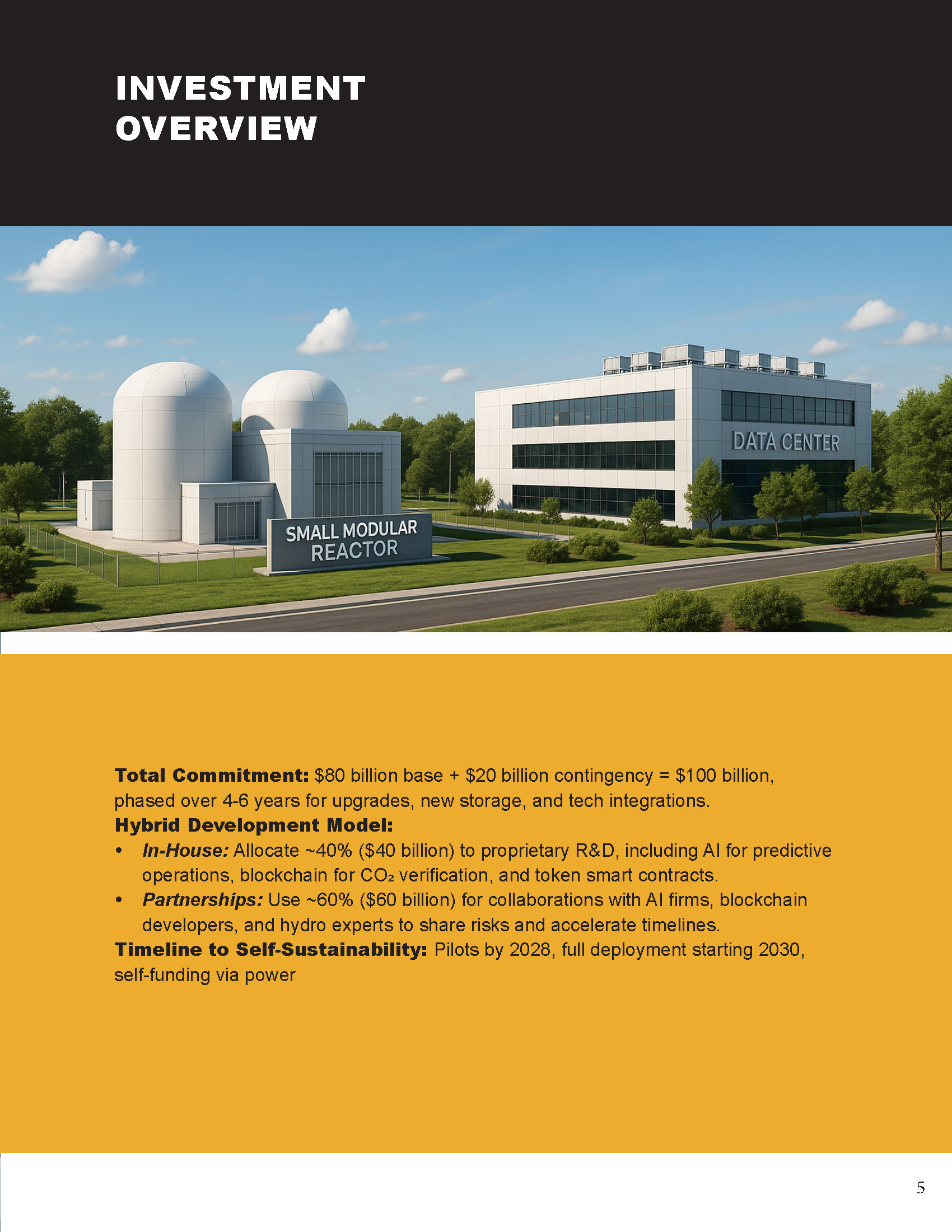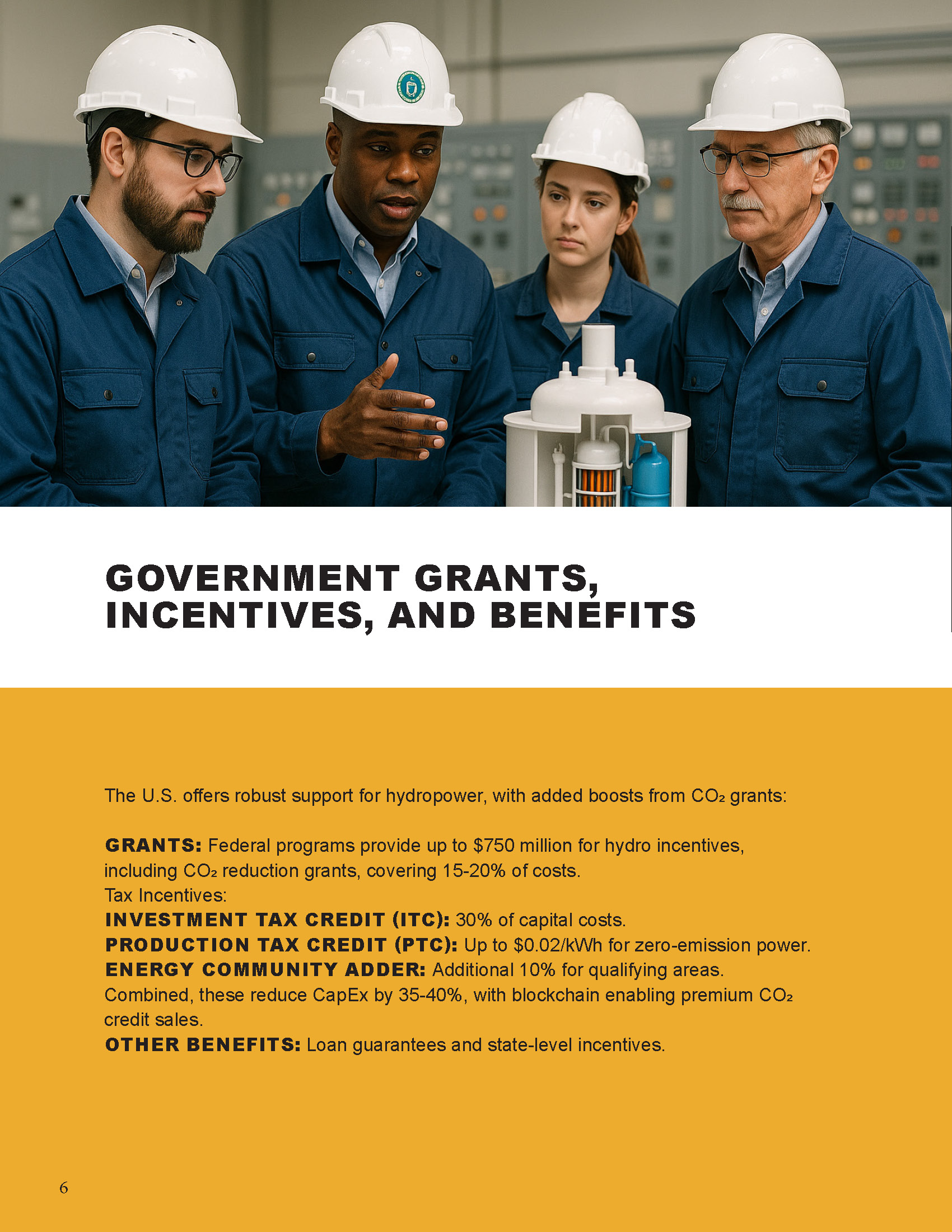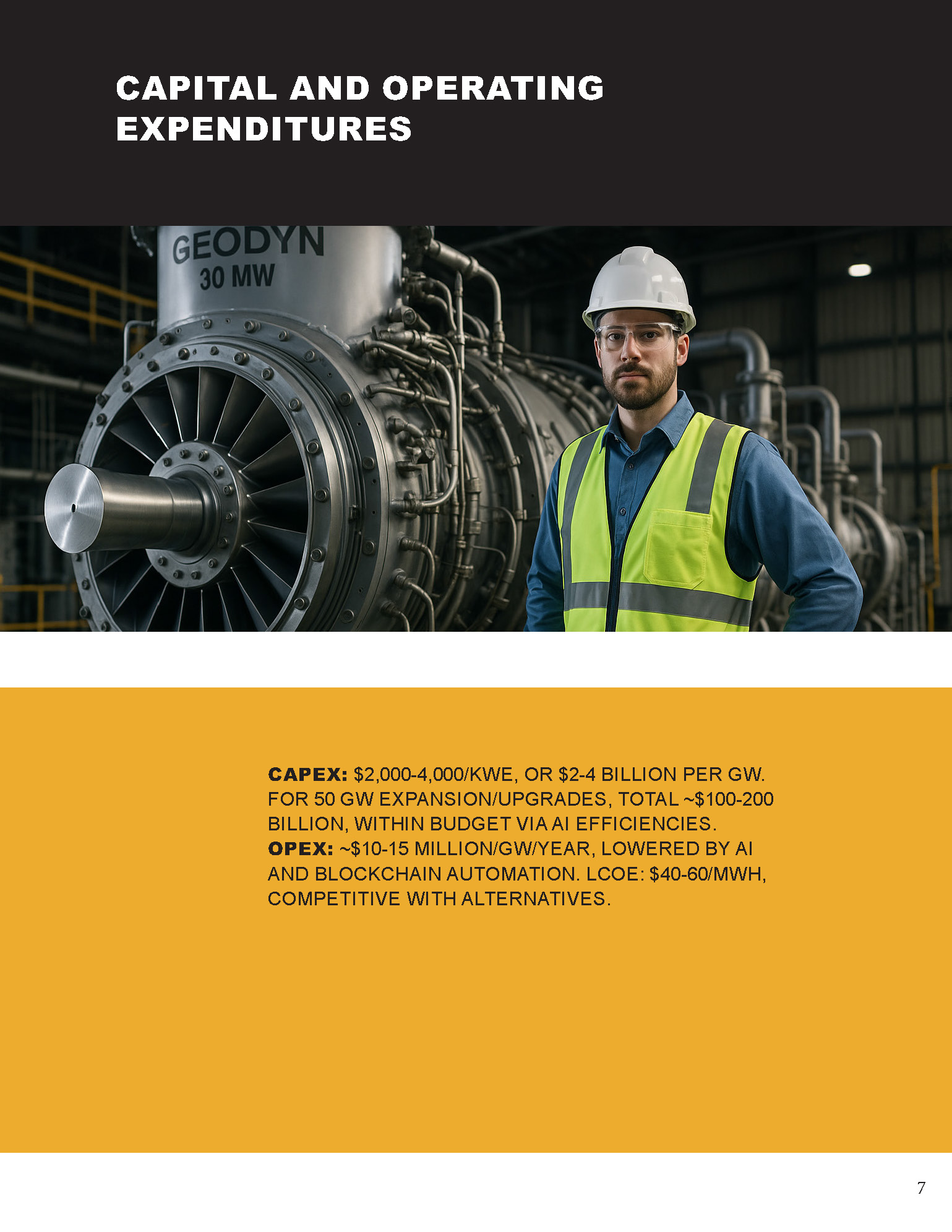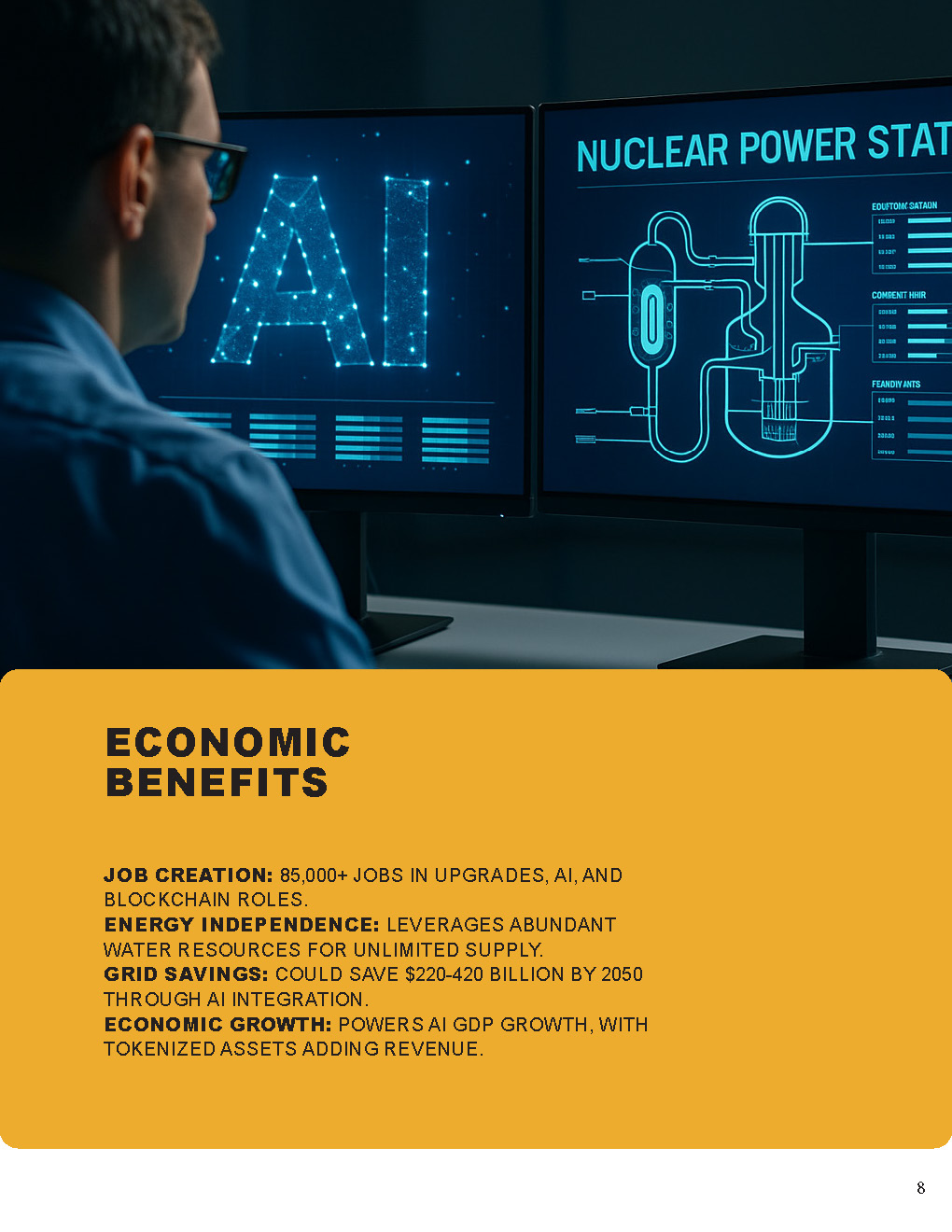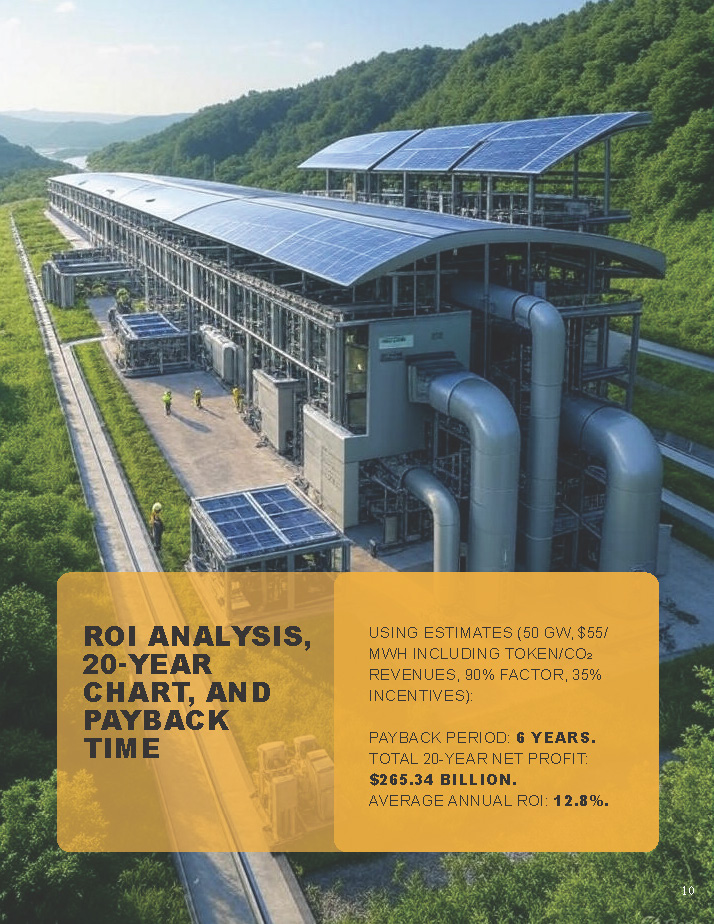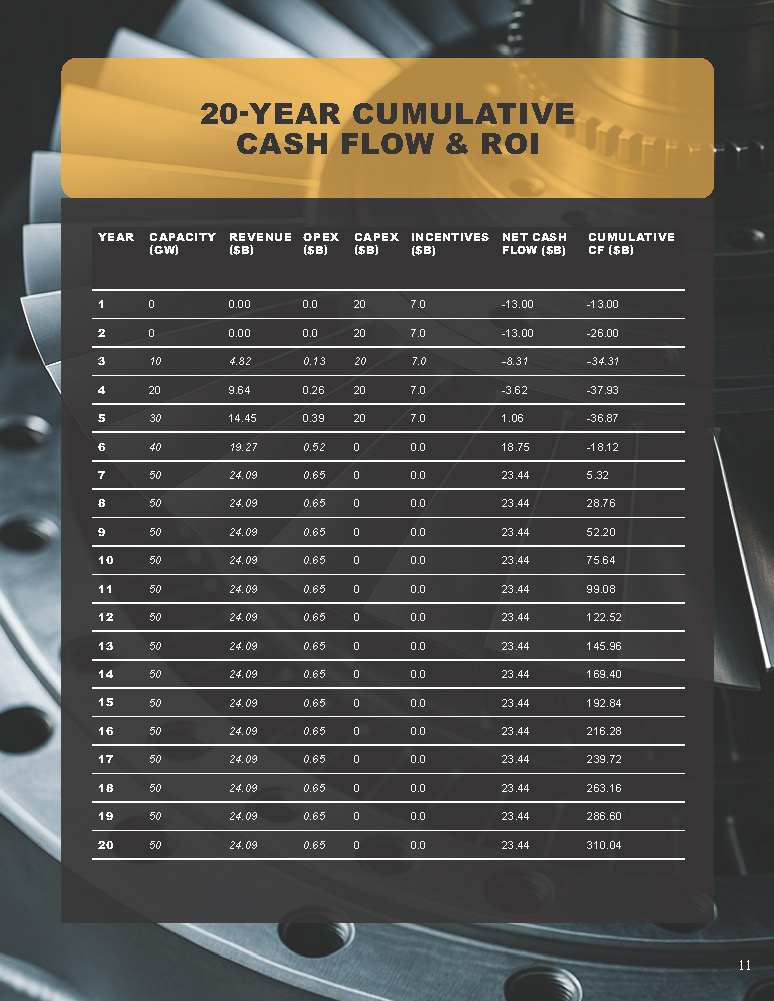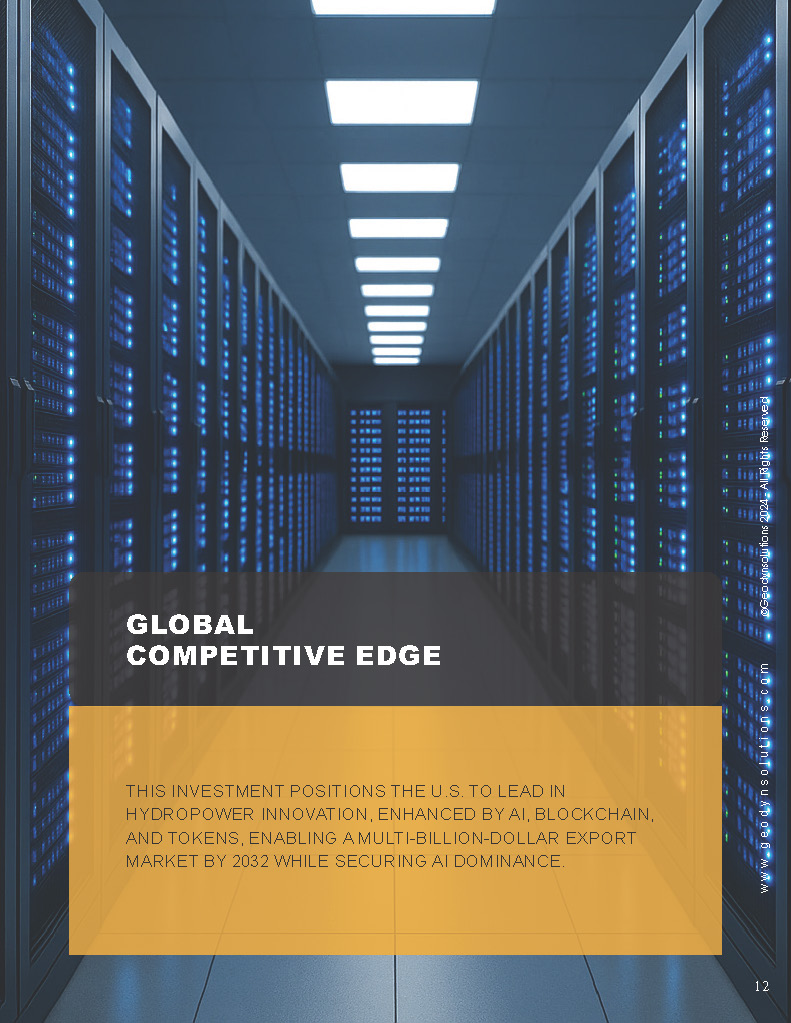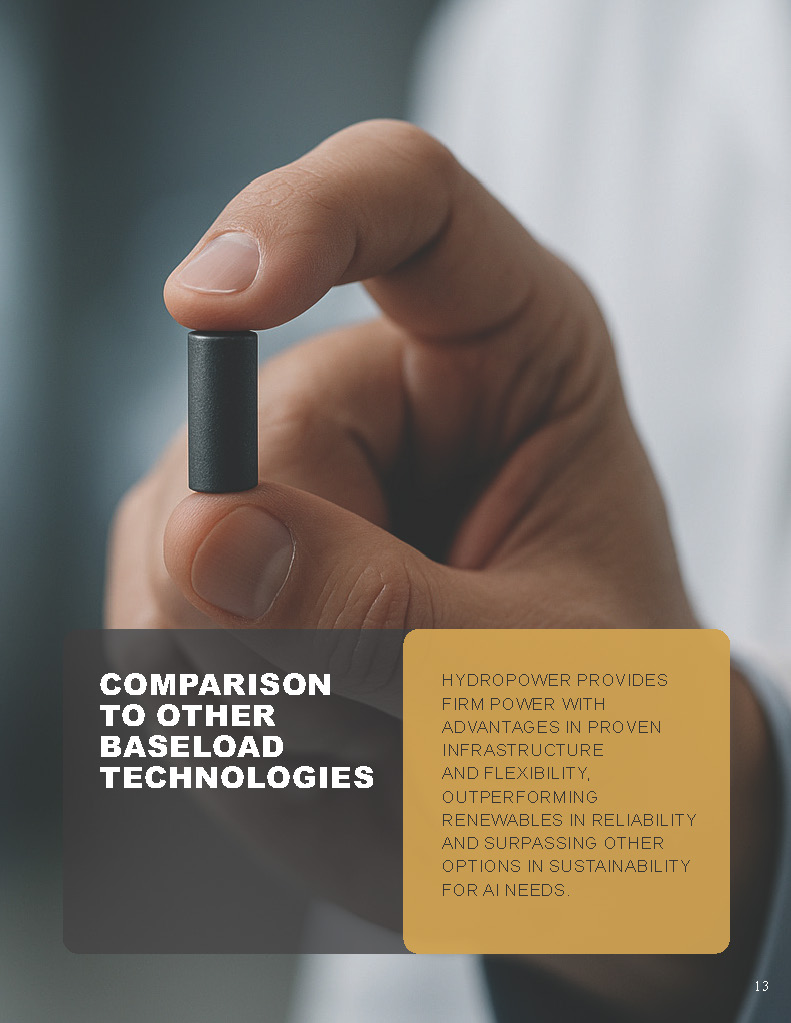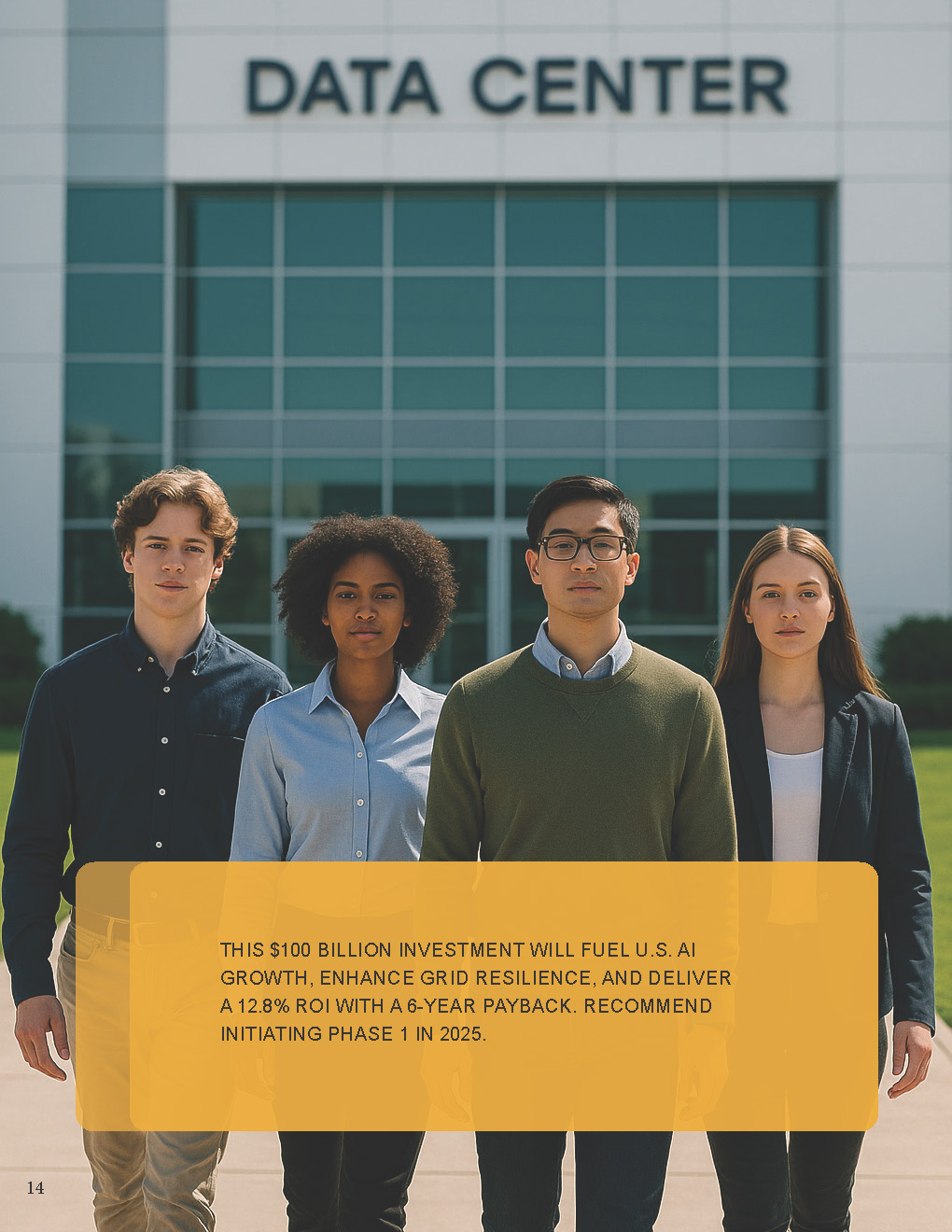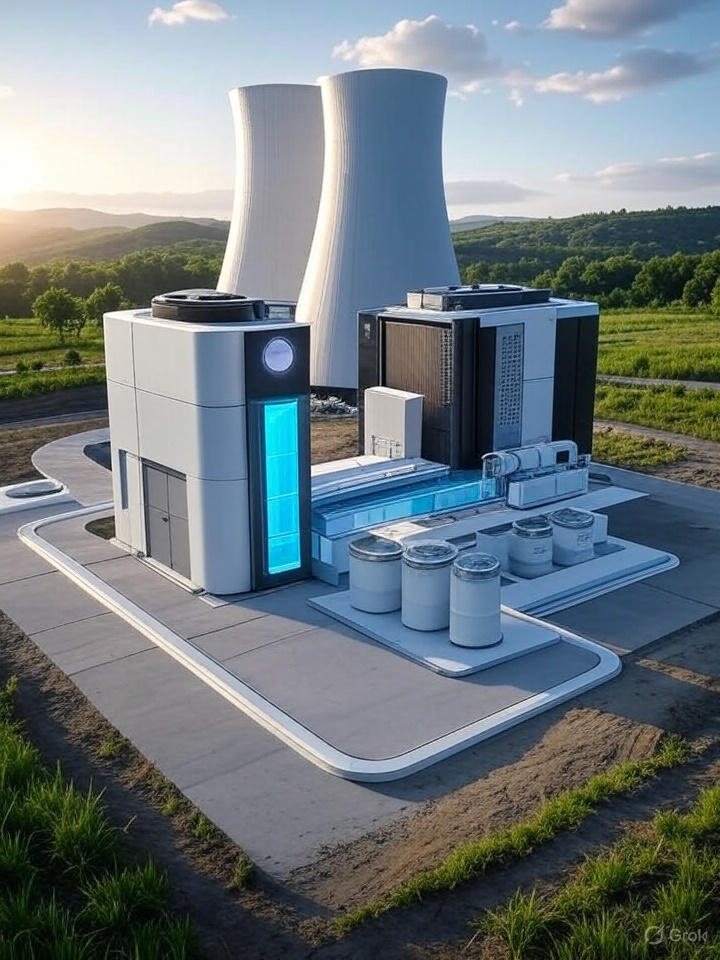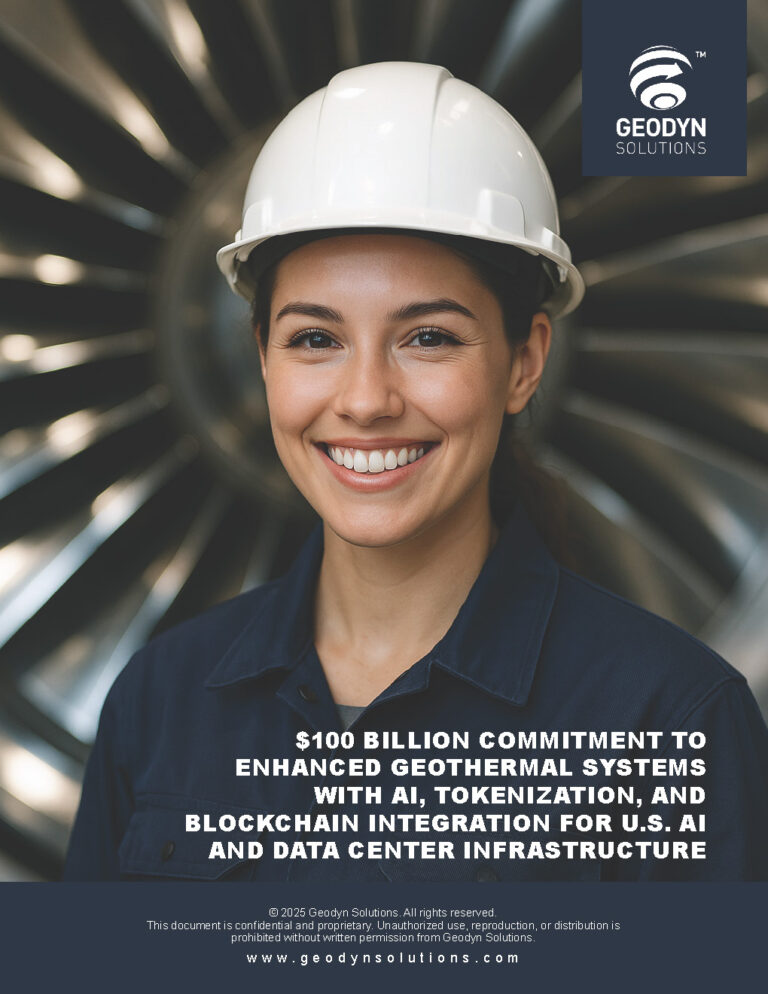$100 Billion Commitment to Hydropower with AI, Tokenization, and Blockchain Integration for U.S. AI and Data Center Infrastructure
Executive Summary
This proposal outlines an $80 billion investment, with a 20% contingency ($20 billion) for a total of $100 billion, to expand and upgrade hydropower systems integrated with AI optimization, blockchain for transparent carbon tracking, and a project-specific token economy to meet the surging energy demands of U.S. AI and data centers, projected to grow from 35 GW in 2024 to 78 GW by 2035. Using a hybrid model of in-house R&D and strategic partnerships, the initiative leverages government grants (including CO2 reduction grants), tax incentives, and economic benefits to achieve self-sustainability within 7-9 years, delivering an optimized average annual ROI of 12.8% and a payback period of 6 years, with a 20-year net profit of $265.34 billion. Hydropower offers reliable, baseload clean energy through upgrades to existing dams and pumped storage, enhanced by AI for efficiency, blockchain for verifiable CO2 offsets, and tokenization for investor engagement, providing a sustainable alternative for powering AI infrastructure with minimal environmental impact. For optimal ROI, focus deployments in the Pacific Northwest (e.g., Washington and Oregon), where abundant water resources, existing infrastructure, and proximity to tech hubs like Seattle enable cost-effective scaling and high revenue from AI data centers.
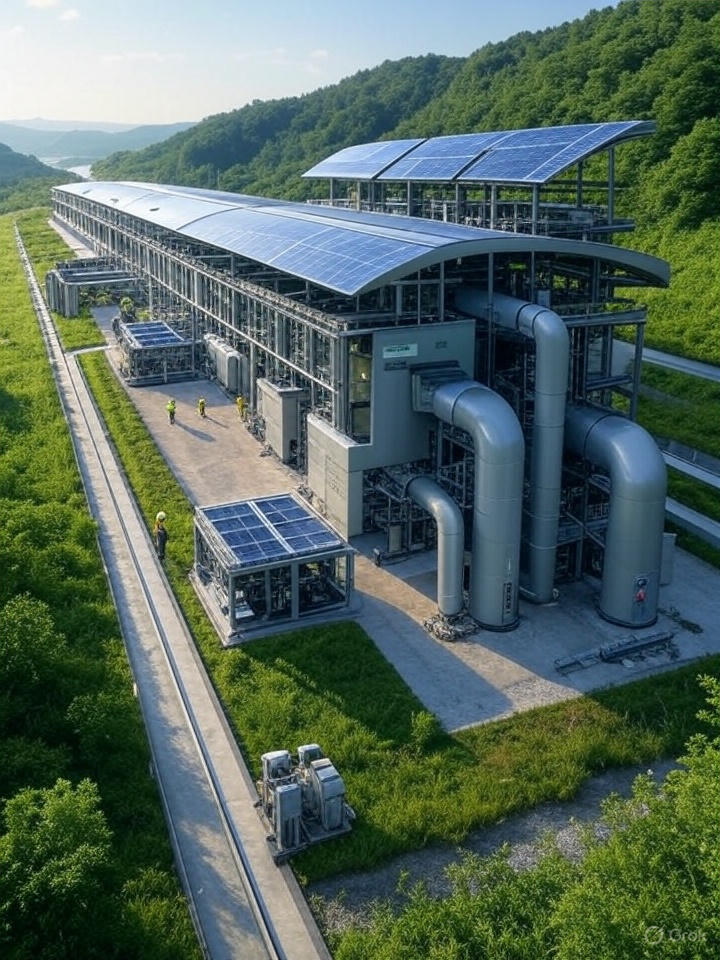 Introduction: The Need for Hydropower with AI, Token, and Blockchain Enhancements
Introduction: The Need for Hydropower with AI, Token, and Blockchain Enhancements
The U.S. faces unprecedented energy demands driven by AI and data centers, with electricity consumption expected to rise from 4,193 billion kWh in 2025 to over 5,900 billion kWh by 2045. Data centers alone are projected to require an additional 323 TWh by 2030, straining an aging grid needing $1.4 trillion in upgrades. Hydropower, with its current 80-100 GW capacity, stands out as a proven baseload source, expandable through upgrades and pumped storage. Integrating AI for flow prediction and optimization, blockchain for CO2 credit tracking, and a utility token for decentralized investment elevates this to a high-ROI model. This addresses energy needs while monetizing carbon reductions via CO2 grants and markets, avoiding issues like waste or intermittency for a cleaner transition.
Investment Overview
- Total Commitment: $80 billion base + $20 billion contingency = $100 billion, phased over 4-6 years for upgrades, new storage, and tech integrations.
- Hybrid Development Model:
- In-House: Allocate ~40% ($40 billion) to proprietary R&D, including AI for predictive operations, blockchain for CO2 verification, and token smart contracts.
- Partnerships: Use ~60% ($60 billion) for collaborations with AI firms, blockchain developers, and hydro experts to share risks and accelerate timelines.
- Timeline to Self-Sustainability: Pilots by 2028, full deployment starting 2030, self-funding via power sales, token staking, and CO2 revenues by 2034.
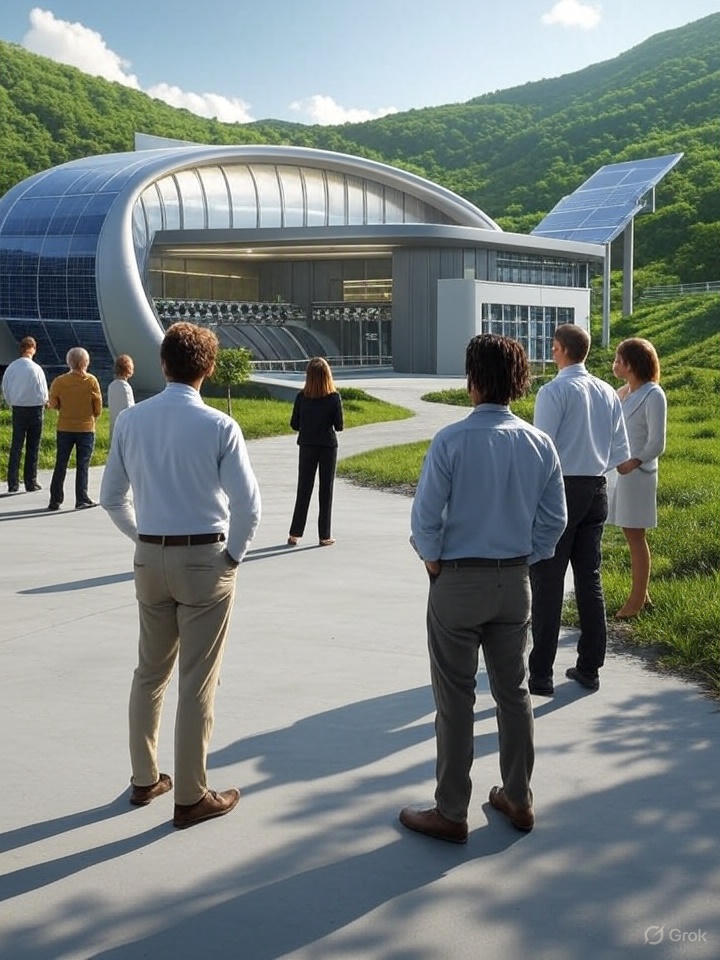 Government Grants, Incentives, and Benefits
Government Grants, Incentives, and Benefits
The U.S. offers robust support for hydropower, with added boosts from CO2 grants:
- Grants: Federal programs provide up to $750 million for hydro incentives, including CO2 reduction grants, covering 15-20% of costs.
- Tax Incentives:
- Investment Tax Credit (ITC): 30% of capital costs.
- Production Tax Credit (PTC): Up to $0.02/kWh for zero-emission power.
- Energy Community Adder: Additional 10% for qualifying areas.
- Combined, these reduce CapEx by 35-40%, with blockchain enabling premium CO2 credit sales.
- Other Benefits: Loan guarantees and state-level incentives.
Capital and Operating Expenditures
- CapEx: $2,000-4,000/kWe, or $2-4 billion per GW. For 50 GW expansion/upgrades, total ~$100-200 billion, within budget via AI efficiencies.
- OpEx: ~$10-15 million/GW/year, lowered by AI and blockchain automation. LCOE: $40-60/MWh, competitive with alternatives.
Economic Benefits
- Job Creation: 85,000+ jobs in upgrades, AI, and blockchain roles.
- Energy Independence: Leverages abundant water resources for unlimited supply.
- Grid Savings: Could save $220-420 billion by 2050 through AI integration.
- Economic Growth: Powers AI GDP growth, with tokenized assets adding revenue.
Environmental Benefits
- Low Emissions: Near-zero CO2, with blockchain tracking offsets for grants.
- Minimal Footprint: Upgrades existing infrastructure; AI minimizes ecological risks.
- Sustainability: Long-life assets with no fuel needs.
ROI Analysis, 20-Year Chart, and Payback Time
Using estimates (50 GW, $55/MWh including token/CO2 revenues, 90% factor, 35% incentives):
- Payback Period: 6 years.
- Total 20-Year Net Profit: $265.34 billion.
- Average Annual ROI: 12.8%.
| Year | Capacity (GW) | Revenue ($B) | OpEx ($B) | CapEx ($B) | Incentives ($B) | Net Cash Flow ($B) | Cumulative CF ($B) |
|---|---|---|---|---|---|---|---|
| 1 | 0 | 0.00 | 0.0 | 20 | 7.0 | -13.00 | -13.00 |
| 2 | 0 | 0.00 | 0.0 | 20 | 7.0 | -13.00 | -26.00 |
| 3 | 10 | 4.82 | 0.13 | 20 | 7.0 | -8.31 | -34.31 |
| 4 | 20 | 9.64 | 0.26 | 20 | 7.0 | -3.62 | -37.93 |
| 5 | 30 | 14.45 | 0.39 | 20 | 7.0 | 1.06 | -36.87 |
| 6 | 40 | 19.27 | 0.52 | 0 | 0.0 | 18.75 | -18.12 |
| 7 | 50 | 24.09 | 0.65 | 0 | 0.0 | 23.44 | 5.32 |
| 8 | 50 | 24.09 | 0.65 | 0 | 0.0 | 23.44 | 28.76 |
| 9 | 50 | 24.09 | 0.65 | 0 | 0.0 | 23.44 | 52.20 |
| 10 | 50 | 24.09 | 0.65 | 0 | 0.0 | 23.44 | 75.64 |
| 11 | 50 | 24.09 | 0.65 | 0 | 0.0 | 23.44 | 99.08 |
| 12 | 50 | 24.09 | 0.65 | 0 | 0.0 | 23.44 | 122.52 |
| 13 | 50 | 24.09 | 0.65 | 0 | 0.0 | 23.44 | 145.96 |
| 14 | 50 | 24.09 | 0.65 | 0 | 0.0 | 23.44 | 169.40 |
| 15 | 50 | 24.09 | 0.65 | 0 | 0.0 | 23.44 | 192.84 |
| 16 | 50 | 24.09 | 0.65 | 0 | 0.0 | 23.44 | 216.28 |
| 17 | 50 | 24.09 | 0.65 | 0 | 0.0 | 23.44 | 239.72 |
| 18 | 50 | 24.09 | 0.65 | 0 | 0.0 | 23.44 | 263.16 |
| 19 | 50 | 24.09 | 0.65 | 0 | 0.0 | 23.44 | 286.60 |
| 20 | 50 | 24.09 | 0.65 | 0 | 0.0 | 23.44 | 310.04 |
Global Competitive Edge
This investment positions the U.S. to lead in hydropower innovation, enhanced by AI, blockchain, and tokens, enabling a multi-billion-dollar export market by 2032 while securing AI dominance.
Comparison to Other Baseload Technologies
Hydropower provides firm power with advantages in proven infrastructure and flexibility, outperforming renewables in reliability and surpassing other options in sustainability for AI needs.
Conclusion
This $100 billion investment will fuel U.S. AI growth, enhance grid resilience, and deliver a 12.8% ROI with a 6-year payback. Recommend initiating Phase 1 in 2025.



